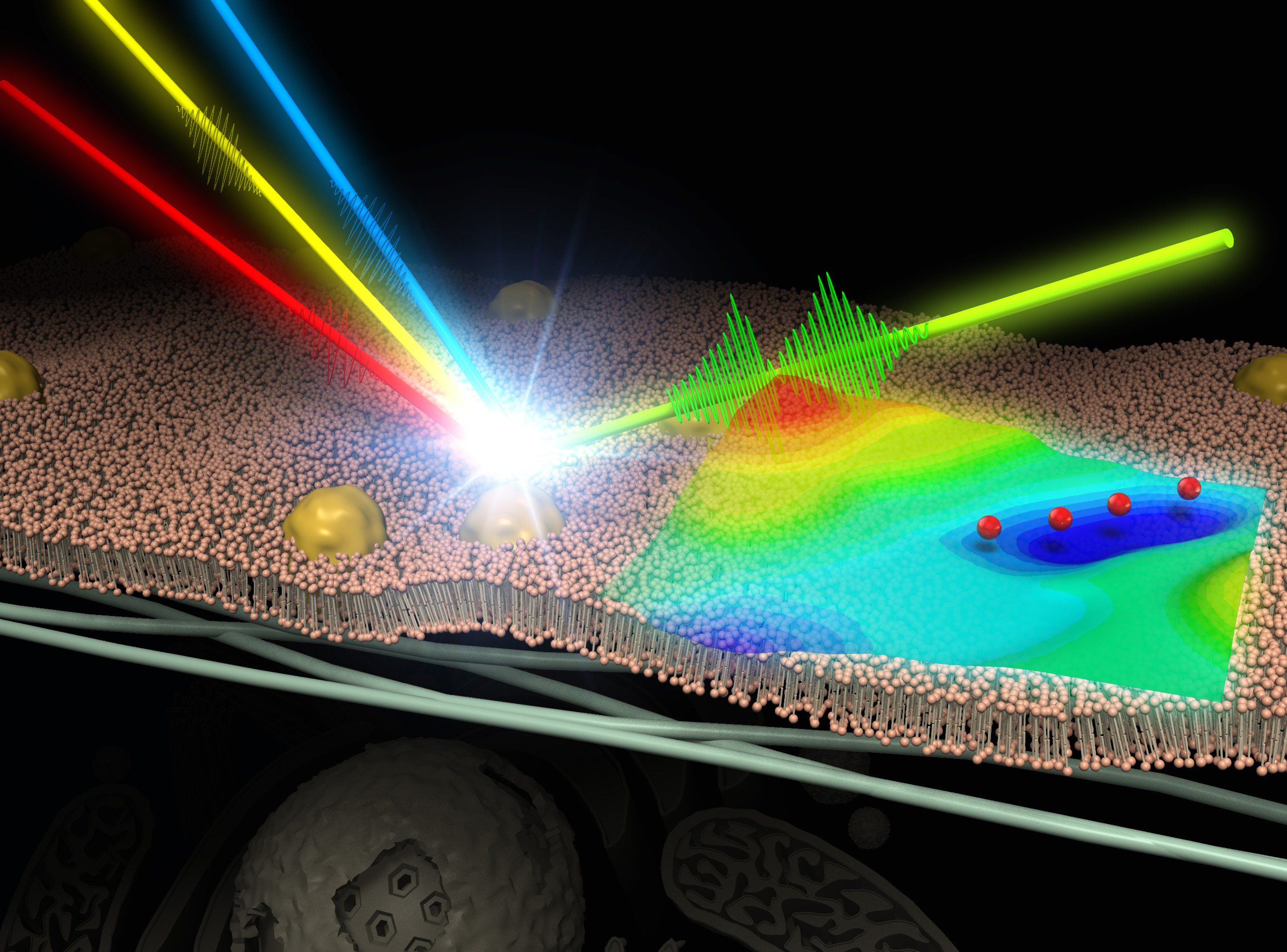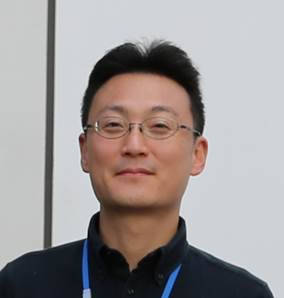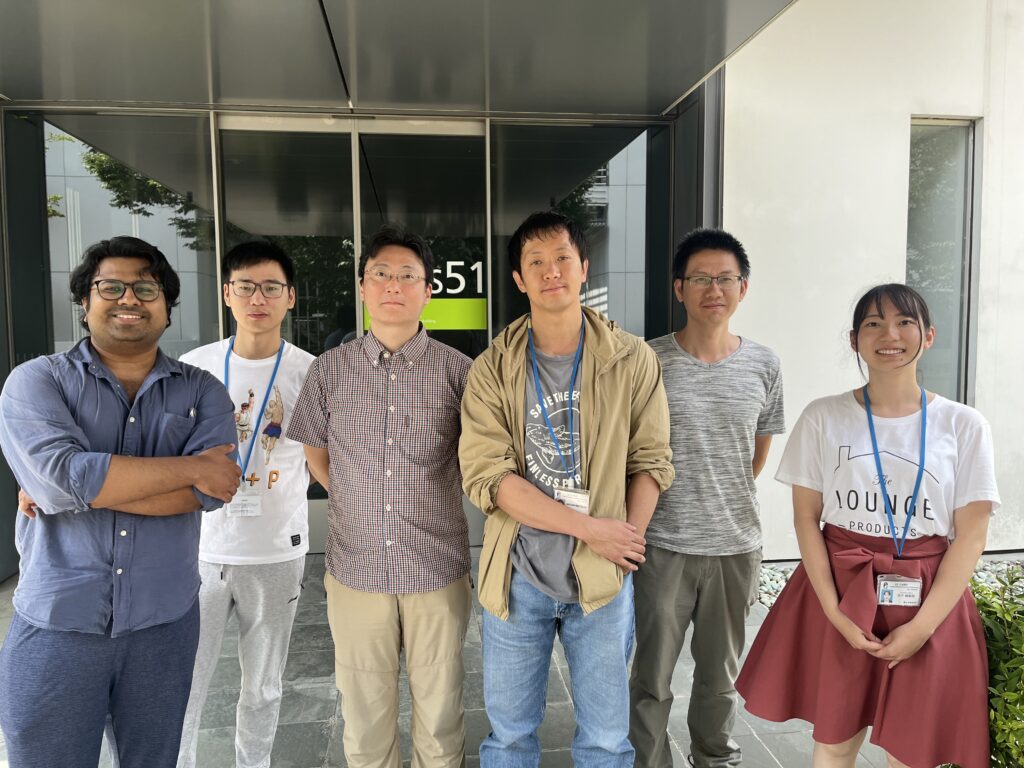INTERFACE SPECTROSCOPY GROUP

Developments of novel interface-selective nonlinear spectroscopies and elucidations of molecular mechanisms of interfacial phenomena
 Satoshi Nihonyanagi
Satoshi Nihonyanagi
Research outline
The static and dynamic properties of molecules at interfaces have attracted much attention in a wide range of scientific fields. It is known that interfaces have unique properties that differ substantially from those in bulk materials. However, microscopic mechanisms of such interfacial phenomena are hardly understood even today. Even very simple questions, such as how are the structure and orientation of water molecules at the air/water interface, have not been answered until 10 years ago. Even-order nonlinear spectroscopic methods are the most powerful techniques for the investigation of molecular properties at interfaces. These methods are based on an even-order nonlinear susceptibility χ(2n) (n=1,2,…), which allows us to probe molecules specifically at interfaces where inversion symmetry is necessarily broken. In our group, by developing new techniques based on the even-order nonlinear optics, we investigate the structures and dynamics of molecules at interfaces. These novel techniques allow us to find various kinds of new physical insights associated with interfacial science, opening up a new way to study interfacial science. Recently, we are focusing on three major themes: (1) Ultrafast hydrogen bond dynamics of water at aqueous interfaces. (2) Photochemical reaction dynamics at interfaces. and (3) Structure-function relation at complex interfaces.
Projects
Development of novel interface-selective nonlinear spectroscopies
Interface properties studied by the use of various probe molecules
Hydrogen bonds at model biological interfaces
Hydrogen bond dynamics at the air/water interface
Photochemical reaction dynamics at interfaces
Structure-Function relation of buried solid/liquid interfaces
Further extension of our technique to electrode interfaces and its applications
Members

Subhadip, Yishuai Pan (Visiting scientist), Nihonyanagi, Woongmo, Feng Wei (OB, visiting scientist), Kinoshita; 2024/8/22.
Satoshi Nihonyanagi (group leader)
Woongmo Sung
Subhadip Roy
Erika Kinoshita
Selected publications
- W. SUNG, K. INOUE, S. NIHONYANAGI, and T. TAHARA
Unified Picture of Vibrational Relaxation of OH Stretch at the Air/Water Interface Obtained by Time-Resolved, Heterodyne-Detected Vibrational Sum Frequency Generation Spectroscopy
Nat. Commun. 15, 1258 (2024). - F. WEI, S. URASHIMA, S. NIHONYANAGI and T. TAHARA
Elucidation of pH-Dependent Electric Double Layer Structure at the Silica/Water Interface Using Heterodyne-Detected Vibrational Sum Frequency Generation Spectroscopy
J. Am. Chem. Soc. 145, 8833-8846 (2023). - R. KUSAKA, S. NIHONYANAGI, and T. TAHARA
The photochemical reaction of phenol becomes ultrafast at the air–water interface
Nat. Chem. 13, 306 (2021). Front Cover - K. INOUE, M. AHMED, S. NIHONYANAGI, and T. TAHARA
Reorientation-induced relaxation of free OH at the air/water interface revealed by ultrafast heterodyne-detected nonlinear spectroscopy
Nature. Communs. 11, 5344 (2020). - A. SAYAMA, S. NIHONYANAGI, Y. OHSHIMA, and T. TAHARA
In situ observation of the potential-dependent structure of an electrolyte/electrode interface by heterodyne-detected vibrational sum frequency generation
Phys. Chem. Chem. Phys., 22, 2580 (2020) - A. MYALITSIN, S. GHOSH, S. URASHIMA, S. NIHONAYANAGI, S. YAMAGUCHI, T. AOKI, and T. TAHARA
Structure of water and polymer at the buried polymer/water interface unveiled using heterodyne-detected vibrational sum frequency generation
Phys. Chem. Chem. Phys., 22, 16527 (2020) - S. NIHONYANAGI, S. YAMAGUCHI and T. TAHARA
Direct evidence for orientational flip-flop of water molecules at charged interfaces: a heterodyne-detected vibrational sum frequency generation study
J. Chem. Phys. 130, 20, 204704 (2009).
